PROLIFIC POACHING CRACKDOWN
Turning the tide? ‘We’ve lost just one rhino in 350 days’ — Sabi Sand
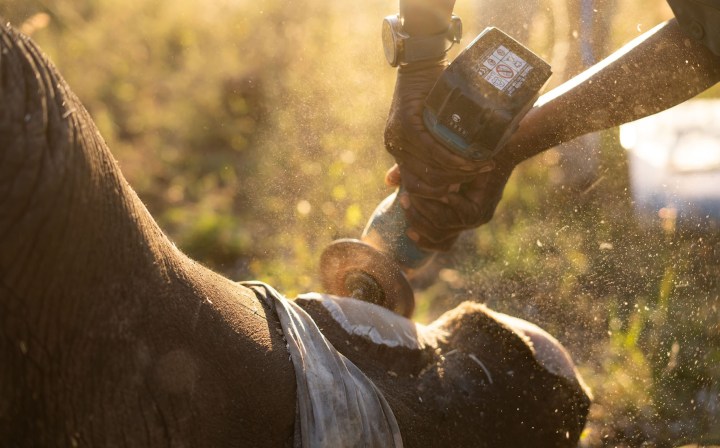
South Africa’s most exclusive enclave of private nature reserves reveals their hidden security nerve centre — and shows what they’ve done to thwart horn poachers for nearly a record year.
Sabi Sand Nature Reserve – Marking 75 years in 2023 as the country’s original luxury safari brand, Sabi Sand’s 34 commercial lodges include some of the most recognisable names in the industry, such as Singita, where anyone can pull in for at least R40,000 a night. There is also Londolozi, co-owned by CEO Dave Varty and his brother — the colourful conservationist and filmmaker John Varty.
Ulusaba, British billionaire Richard Branson’s plush concession, forms part of this storied stretch of Lowveld, spanning 55,000 hectares on the western edge of Kruger National Park.
Yet, not even an enclave criticised by some as a Big Five fortress for wealthy tourists was able to invoke the Midas touch to protect all their rhinos against the past decade’s poaching carnage.
This has left the so-called buffer bandits of the private sector to surrender to last-resort measures — now accepted as inevitable, effective and even normalised, for the time being. That is, dehorning all their rhinos and introducing other security interventions that seem to be paying off, reserve manager Iain Olivier has told Daily Maverick inside their security headquarters.
“In August 2023, we lost our first rhino to poaching in 350 days,” says Olivier, also serving as reserve warden since 2019.
“We’re sometimes called the ‘buffer bandits’: you know, the cowboys of the buffer areas of the western sector of the greater Kruger,” quips Olivier, who did his master’s in Kenya on the links between conflict and conservation among Maasai herders. “These sort of fringe private sector guys who tend to do what they want … throw money at security and sort things out. But I’m quite comfortable with that. We get things done.”
Watch: Reserve manager and warden Iain Olivier demonstrates the ‘secret sauce’ behind the reserve’s state-of-the-art fence, spanning 74km along the western border. (Video: Tiara Walters)
‘I don’t celebrate dehorning, but it’s effective’
For security reasons, the reserve’s rhino numbers remain under wraps, but Olivier singles out an upgraded fence system, detection and surveillance technology, drones and staff polygraph tests as crime-busting techniques that have helped keep this critical local population viable.
To combat the surge in poaching incidents, the reserve initiated a dehorning programme in May 2022.
This move aimed to reduce the attraction of rhino horns by removing them.
“I don’t celebrate dehorning,” Olivier cautions, “but it’s been an effective interim tool.” The data demonstrate a significant drop in security incidents following the dehorning initiative, underscoring its effectiveness.
In 2021, the protected area, including neighbouring Mala Mala and Sabie game reserves, lost a total of 25 rhinos. In 2022, poachers claimed the lives of four animals. Since dehorning last year, poaching in the protected area has dropped by 96% to just one individual this year — a dehorned animal.
In the 350-day period leading up to August, this brought Sabi Sand to within a hair’s breadth of a year without losing a single precious rhino, a remarkable milestone given that illegal horn demand has claimed about 10,000 rhinos in the greater Kruger area since about 2007.
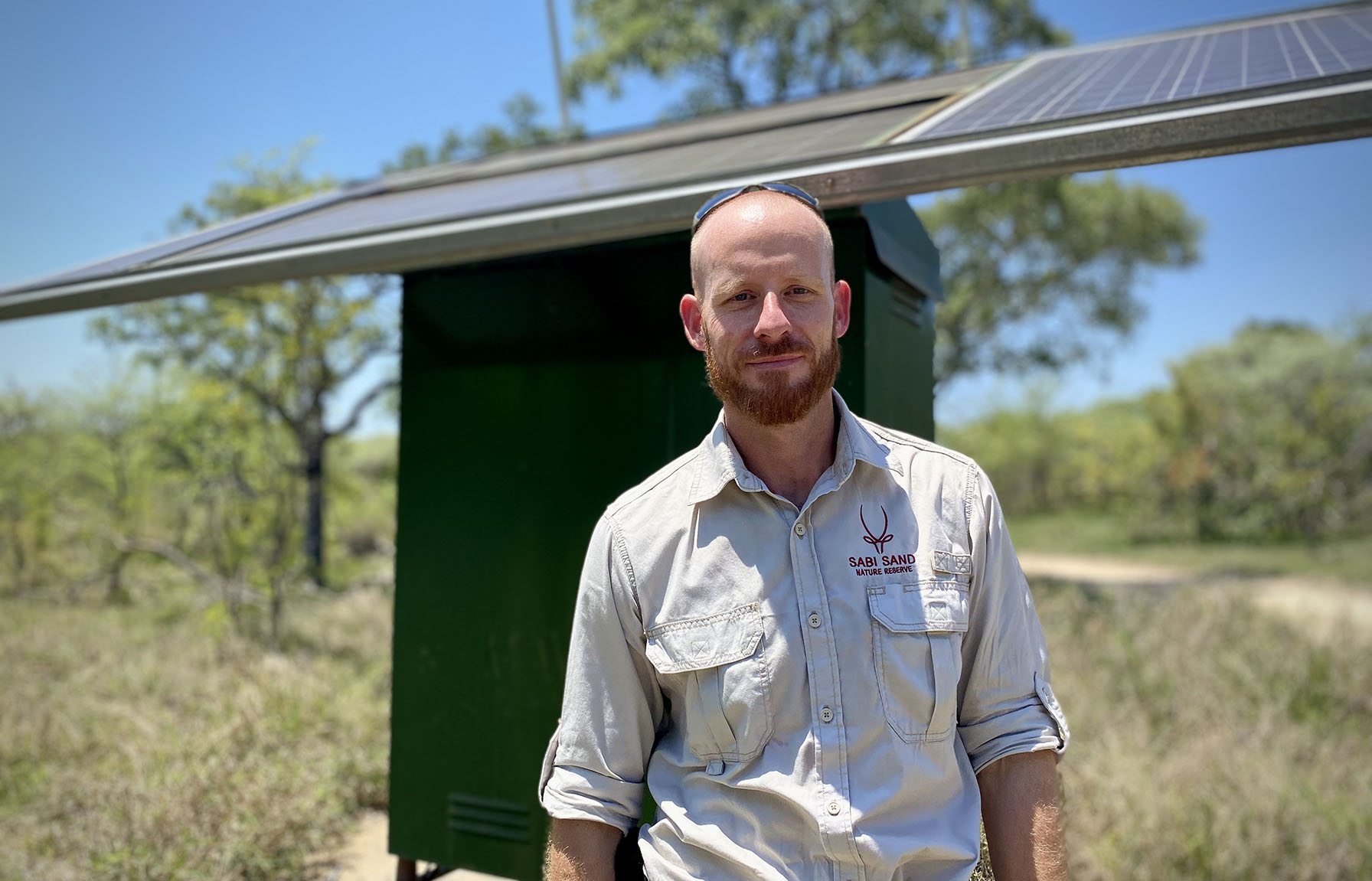
Reserve manager and warden Iain Olivier at one of the reserve’s shock boxes, an installation powered by solar, battery and inverter energy. A single box runs roughly 5 kilometres of fence. The shock box also funnels alarms back to the reserve’s main security control room. (Photo: Tiara Walters)
Olivier and his colleagues acknowledge that challenges remain, even with dehorned individuals. Poachers have adapted to the changing circumstances, at times targeting dehorned animals for the remaining horn fragments.
“I think we were quite lucky in that our local syndicates only wanted the full horns,” says Kim Lester, the reserve’s internal investigator and control room manager. “On the other hand, because there are so few rhinos left with horns, some poachers have changed their strategies. Poachers from Mozambique now seem to be targeting dehorned animals — but to a lesser extent.”
Successful arrests of two prolific poachers have also led to a drop in incidents.
“In the period before dehorning, we had 40 security-related incidents. After we arrested a very well-known poacher, they dropped,” Lester observes. “We arrested another well-known poacher shortly afterwards. He was actually on our radar for years, and we didn’t know his real name until we arrested him, which caused a further drop in incidents.”
Truth be told: polygraph tests
The reserve, including lodges, employs about 2,000 people — with 70% from neighbouring communities in the Bushbuckridge Local Municipality.
To investigate criminal activity that threatens a species ark of about 500 birds, 150 mammals and a savanna biome that is as intact as it gets these days, Lester’s unit conducts annual polygraph tests with 100% of field staff and 25% of lodge-based staff who do not work in the field.
Any staff member with access to a vehicle and the reserve undergoes the test.
If a rhino is lost in a specific area, policy requires staff members working in that vicinity to get tested. Those who fail, undergo further investigation and a second test.
This approach has allowed the reserve to identify potential internal involvement, but Lester stresses the importance of creating a safe and open environment for interviews. The goal is to obtain information and cooperation, not intimidation.
“We want all reserve users to feel safe with us so that they can talk to us, even though it doesn’t happen often that they do,” she notes, hinting at the complexities of the process. However, her team has successfully identified internal staff members involved in poaching activities — and thus their access to the protected area was revoked.
“We’ve found that it’s been working for us amazingly, and we’ve cleared out some really bad people,” she says.
This year alone, the reserve has taken significant action, firing 11 staff members, seven of whom were linked to poaching activities. Four were fired for theft, because “a theft incident could develop to more serious offences, such as poaching”, she notes.
“There are the outside syndicates, and the syndicate leaders and then there are the different levels of poachers. We basically have the same inside as well,” she explains. The issue extends to former employees recruiting individuals who may still work for the reserve, creating a vulnerable system that requires constant vigilance.
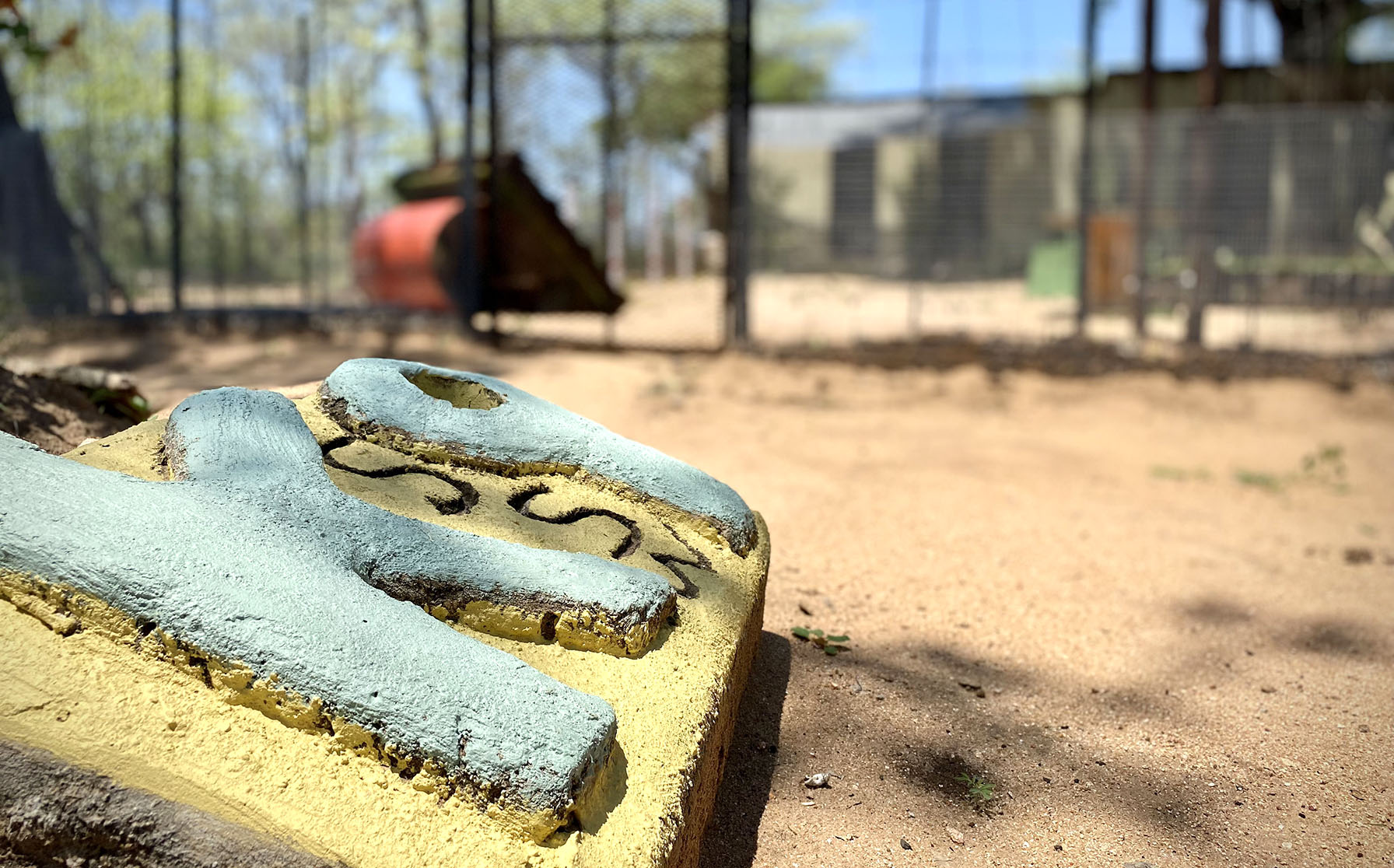
The exterior of Sabi Sand Nature Reserve’s dedicated K9 unit, which is deployed during anti-poaching operations. (Photo: Tiara Walters)
The reserve’s approach includes random searches at the access gates as well as of staff and lodge accommodations, along with risk assessments for lodges to identify areas where security can be enhanced.
But how does one tell the difference between a nervous criminal and someone who has a default disposition for nervousness?
“The testers will ask control questions, such as, are you sitting on a chair? That’s how they form a baseline of stress levels and reactions to different questions that are calibrated to each individual,” Lester says.
“The polygraphers monitors will test blood pressure, heart rate, perspiration, breathing and movement. So generally, a person will react — if not in one of them, all of them,” Lester explains.
‘People poach because of debt’
An enduring aspect of local poaching is its connection to the sea of human poverty swelling in the Bushbuckridge area abutting the reserve.
The Sabi Sand Pfunanani Trust funds 14 community projects to support some of the poorest people barely surviving outside the fence. Yet, this cannot cater for the lion’s share of two or three million people living here, who — 30 years into democracy — still await basic services like running water from a state corroded by corruption, inaction and lawlessness.
There also appears to be a link between loan sharks, the destabilising effects of the Covid-19 lockdown and the rhino bloodshed that has rocked reserves.
“Most people who get involved with poaching do so because of debt, loan sharks and all the same syndicate leaders,” Lester reveals. “That’s how they hook them.”
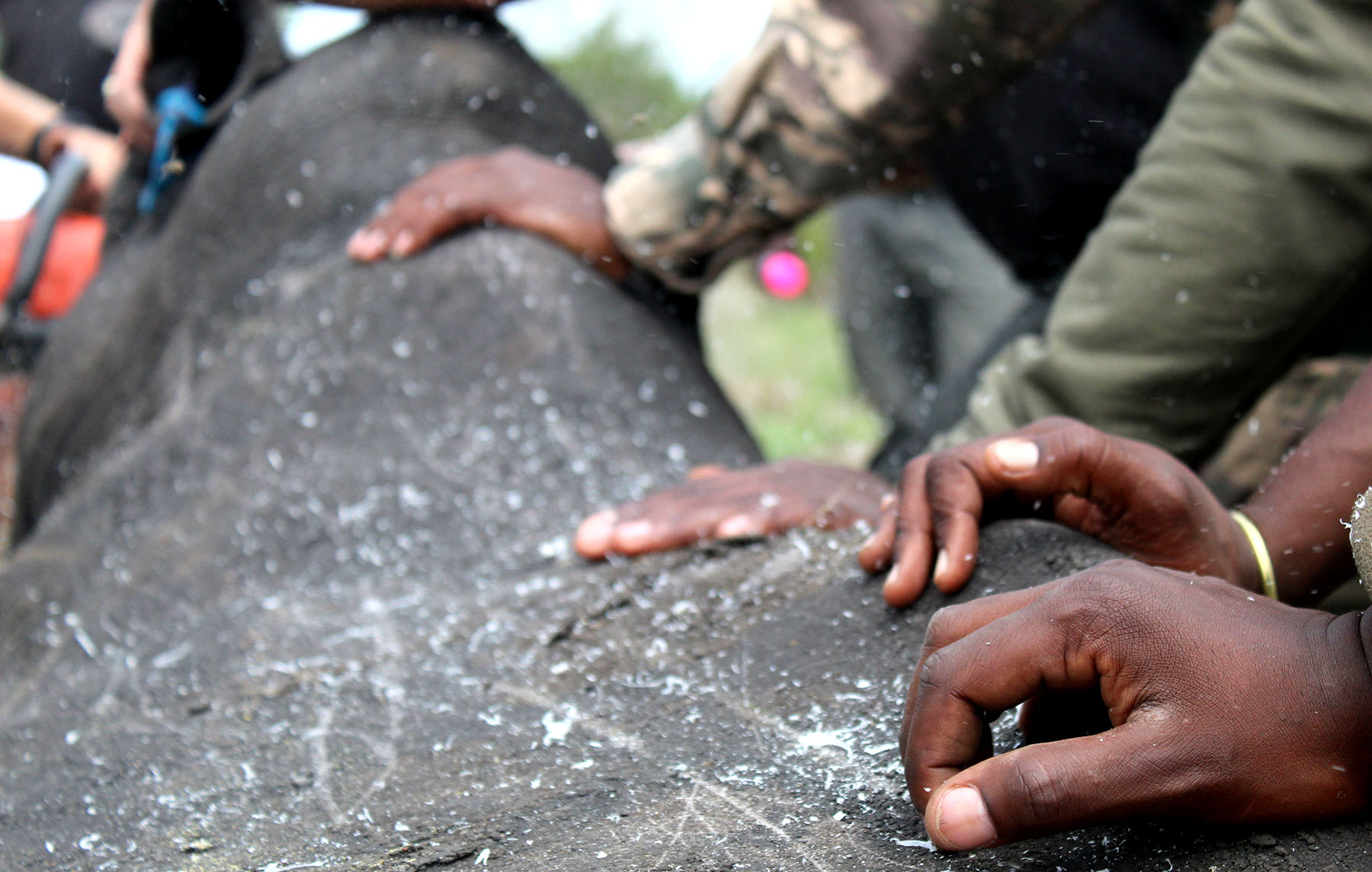
Dehorning a rhino as part of Sabi Sand Nature Reserve’s anti-poaching interventions. (Photo: Sabi Sand Nature Reserve)
In response to these economic hardships, in 2023 the reserve launched a financial literacy course for staff, in partnership with the Greater Kruger Environmental Protection Foundation.
These courses aim to empower employees with the knowledge and tools to manage their income better, reducing their vulnerability to predatory loan sharks and criminal involvement.
“Covid hit the country hard, and it left people desperate. We saw an increase in snaring and meat poaching in the areas around the reserve because people weren’t earning money; they had to eat,” Lester recalls.
“I always say I would love to have my own lockdown now that Covid’s done,” she smiles. During the height of the pandemic, daily shot reports, each requiring follow-ups, were the norm. “We never stopped here. We just kept going.”
Inside the heart of the security hub
Nestled inside the reserve’s headquarters is its security hub, where an unsung team of eagle-eyed individuals work shifts around the clock, scrutinising the vital areas.
In this control room, cameras are monitored using several pairs of human eyes, staring pointer-like at the screens ahead of them.
“Our human controllers are so well trained and experienced, they can detect that human presence immediately,” Olivier says. “They have seen people at more than 1km from the AI-enabled thermal cameras — it’ll be so far away and pixelated that even the AI can’t pick up on it.”
Lester adds that all their anti-poaching successes “have not come directly from our AI-enabled cameras. Every contact, every arrest has come directly from the result of our controllers spotting them.”
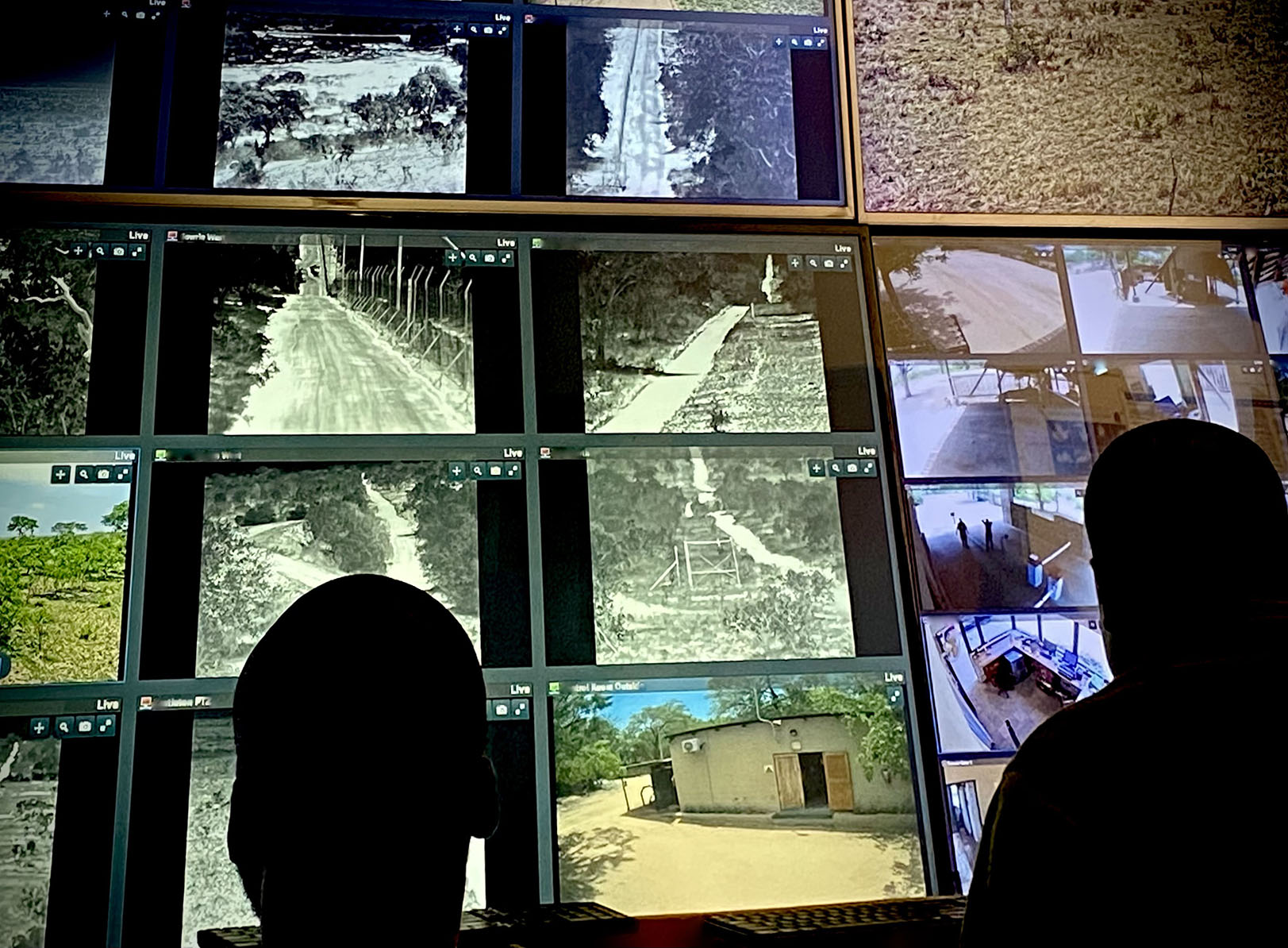
Monitored by human controllers 24 hours a day, the security hub’s control room employs an integrated system of multiple technologies to detect and respond to incursions. This photo was edited for security reasons. (Photo: Tiara Walters)
Designed by Wildlife Protection Solutions, mobile trail cameras are deployed inside the bush at different locations. When an intruder slips off a static screen, Olivier says “there are also many, well-placed thermal and AI-enabled pan-tilt-zoom (PTZ) cameras to pursue them”.
Pointing to a PTZ screen overlooking the south-facing Paul Kruger gate, Lester recalls: “Last June our controllers saw someone walking along the river and they followed them while we got our anti-poaching teams to react. As it turned out, the person was a pangolin poacher, whom we arrested.”
This control room also employs the Earth Ranger software system as a live data-management tool, tracking various aspects of the reserve — from layers of rivers, dams, lodges and ranger pickets; to live monitoring of all vehicles and cameras. The software system serves as a critical component for Sabi Sand’s security infrastructure, including fence alarm management.
“All the alarms will come into the control room and Earth Ranger,” Lester explains. “The control room informs the fence team, who’ll then go out to see what’s happening on the ground.”
The control room’s communication network spans multiple solar-supported towers across the reserve, ensuring uninterrupted connectivity. All fence shock boxes and towers are backed up by solar and generator power. These communication masts, featuring fibre connections and strong repeaters, allow for real-time monitoring and rapid response by the reserve management teams.
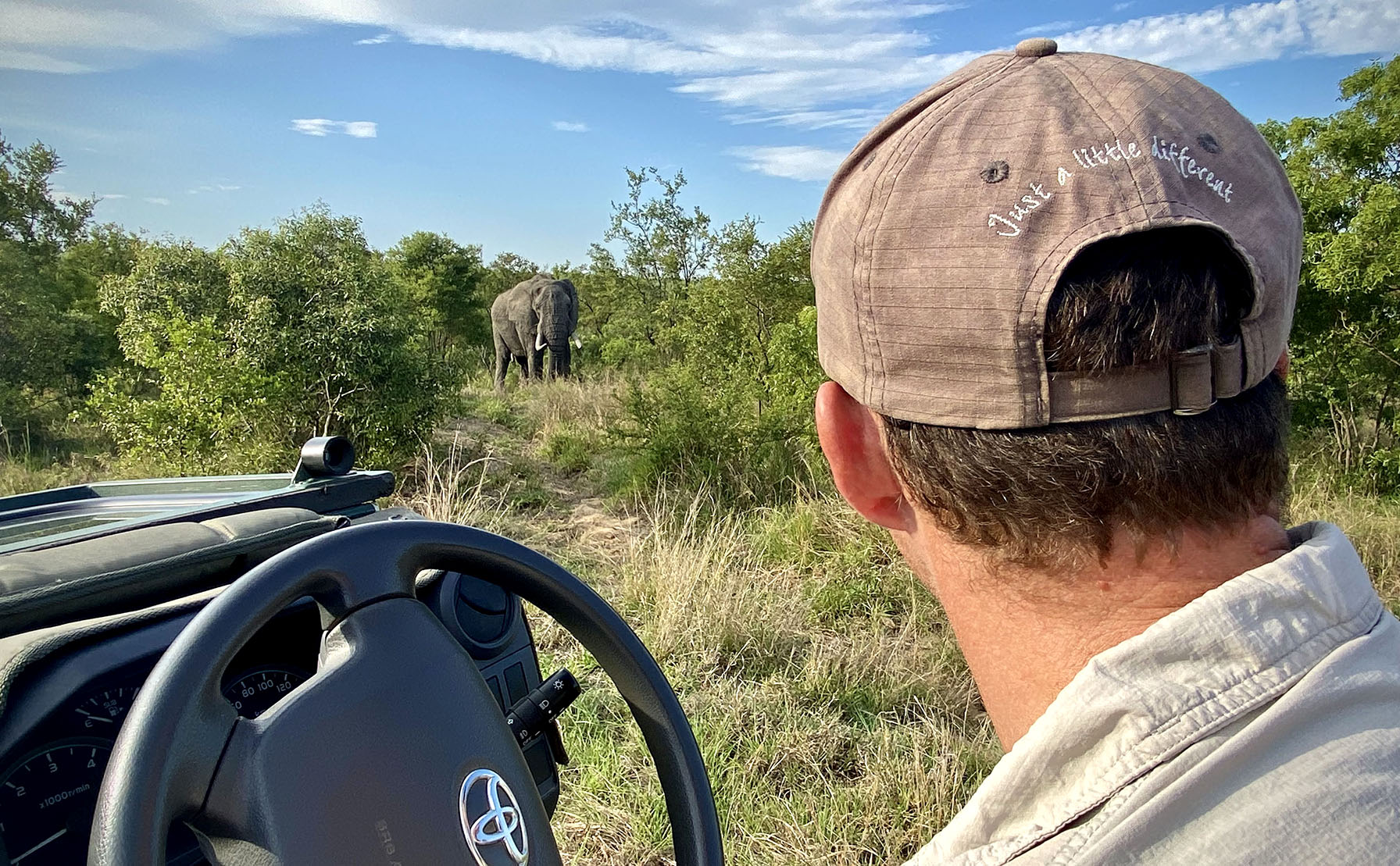
On a 2023 summer safari drive with Savanna Private Game Reserve, representing one of Sabi Sand’s 34 commercial lodges. Thanks to reserve protections, guests can still see dehorned rhinos. The other megafauna A-listers — lions, leopards, elephants and buffaloes — are all often spotted on a single drive. (Photo: Tiara Walters)
Rhino horn: ‘It really does not smell nice’
The controllers, whose identities we cannot reveal for security reasons, work eight-hour shifts to maintain vigilance 24 hours a day.
As though anyone had the ability to stare at pixelated dots hours at a time, and tell if those tiny blobs were, say, impalas or humans, one controller told us: “You just need to concentrate.”
Lester, who is also in charge of control room ops, adds they encourage controllers to get involved in hands-on conservation efforts, such as dehorning rhinos. This connects them more deeply with the cause they protect.
While the loss of wildlife is a deeply personal matter for Lester, she says any mortality motivates her to intensify the reserve’s anti-poaching responses.
“Look, I mean, it’s hard when we do lose a rhino,” she says. “Each of our team, we take it personally, we really do.”
Hovering somewhere at hip-level, listening to the adults speak about defending the natural heritage of future generations, a child pipes up.
“The other day, my school went and dehorned two rhinos,” says the child, who may not be identified.
“We got to touch the rhinos and smell the horns, but they don’t smell very nice,” the child confides. “They really don’t smell very nice.”
When asked what it was like to witness such things first-hand, the youngster says: “It was very fun. My favourite part was seeing the rhino wake up and walk away.” DM
Tiara Walters is a full-time reporter for Daily Maverick’s Our Burning Planet unit. Walters’s stay in Sabi Sand Nature Reserve was made possible by the reserve’s headquarters.



















 Become an Insider
Become an Insider
Comments - Please login in order to comment.